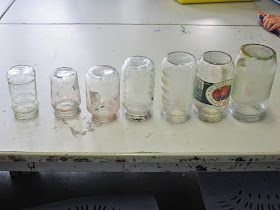For a flame to burn it needs 3 things:
This is called the
Fire Triangle. If you remove one of these things the flame will be extinguished.
This
week the science club students investigated what would happen if they
put a jar upside down over a candle. They predicted that the flame
would go out because all the oxygen would get used up.
The students had to
observe the
flame carefully to ensure it had gone out before they lifted off the
jar. Sometimes the flame was not out and when the jar was lifted oxygen
got to the candle and the flame got bigger.
Then they used a range of jar sizes to see if this made a difference to the time the flame burnt for.
After
1 test they found out that the candle in the small jar extinguished
before the candle in the large jar. However, they decided to do more
testing just in case this was a coincidence.
After more trials they found out that every time the candles in the smaller jars were extinguished the quickest.
Why
does this happen? Everyone decided that it was because the biggest jar
had the most oxygen inside it so the flame could burn for longer. As
the candle burnt it used up the oxygen and gave out carbon dioxide. The
carbon dioxide would also help to extinguish the flame.
They also found out that there are many changes that occur when a candle burns.
So what is produced when a candle burns?
- You sometimes get smoke and soot (which is particles of partly burnt wax)
- The wax changes into melted wax.
- Carbon Dioxide and Water are produced from the chemical reaction between the oxygen and the fuel in the flame.
























